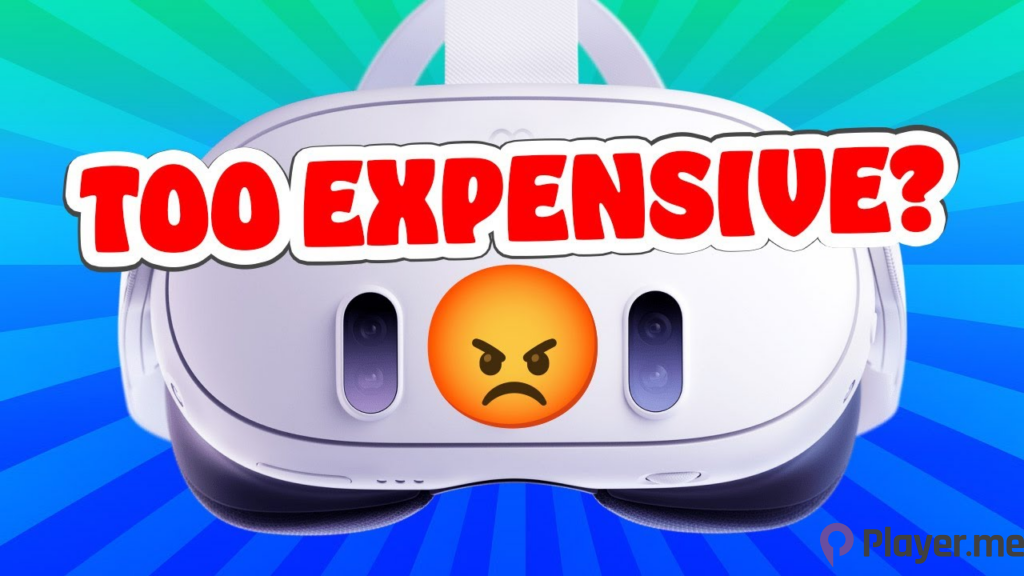Meta Quest 4 will be released sometime in 2026 with two variants, The Information reports citing three people in charge of the wearable headset. The two variants are codenamed ‘Pismo Low’ for the Standard Model and ‘Pismo High’ for the Premium Model.
The sources have accurately reported Meta’s Quest headset and smart glasses plans multiple times before. For example, they predicted the release of the Quest 3S, which will be released on September 25th, later this year. Thus, the two codenames in the report are most likely the new Meta Quest 4 and Quest 4S.
Besides Meta Quest 4, the report suggested that Meta plans to ship Quest Pro 2, the competitor to Apple’s Vision Pro with the codename La Jolla, in 2027. The name may seem familiar to some, as leaks from Meta’s March 2023 internal roadmap highlighted La Jolla as their Codec Avatars project for photoreal spatial telepresence via face-tracking sensors on VR headsets.
Rumours About Meta Quest 4 So Far
Although Meta Quest 4 is at least two years away, Meta CEO Mark Zuckerberg has already hinted at its features. For instance, when Apple’s Vision Pro officially launched, Zuckerberg took to social media to criticise its rival’s headset and stated that Quest 3 did it better. Although he agreed that the Vision Pro’s eye-tracking feature is “really nice”, he highlighted that Quest Pro had eye-tracking sensors first and will intend to “bring them back in the future”, possibly in Meta Quest 4.
In addition, despite praising Vision Pro’s eye-tracking feature, Zuckerberg made a long rant highlighting its flaws. He stated: “The eye and hand tracking are not a perfect control system, and you need a keyboard or neural interface for better accuracy.” A month later, Zuckerberg appeared on a podcast and elaborated that the company’s wearable electromyography (EMG) band can interpret the “nervous system signals” from your brain to your hand for better gesture controls.
In his own words, he stated: “You’ll essentially be able to type and control something by thinking about how you want to move your hand. It is a private and discreet interface. The technology is also close to product-ready and will be in a Meta product in the next few years”, which Meta Quest 4 aligns with.
Related: The Competitive VR Showdown: Meta Quest 3 vs. Apple Vision Pro
Meta Quest 4 Needs to Balance Technology and Pricing
While Meta’s priority on Meta Quest 4 is its advanced and improved technology, they also need to consider the pricing to be more consumer-friendly to avoid what happened with Quest 3. For context, despite Meta Quest 3 garnering attention for its advanced features, many users and critics argue that it is overpriced and sought the Quest 2 instead.

To put it into perspective, many users felt that Quest 3 upgrades in areas like resolution, performance, and comfort are incremental rather than revolutionary, thus questioning the substantial price increase. Meta also claimed that its Meta Quest series is to make VR more accessible with reasonably priced hardware. However, the higher price of the Quest 3 contradicts this established promise of affordability.
In addition, many VR enthusiasts and potential new users are sensitive to price increases, especially in a market where affordability is a significant factor in adoption. As there is no shortage of competitors with Sony or Valve and their previous generation, the $499.99 price tag of Meta Quest 3 seems an unconvincing choice from the $199 price of Quest 2.
Therefore, while we expect Meta to continue to innovate, with Meta Quest 4 potentially setting new standards for VR headsets, they must also align the product with a consumer-friendly approach for a well-aligned balance between technology and pricing.
Rumours About Meta Quest Pro 2 So Far
As mentioned above, Meta Quest Pro 2, the high-end Quest headset, will feature Codec Avatars, the company’s long-term goal to revolutionise remote communication by achieving truly convincing photorealistic avatars driven in real-time by headsets with face tracking sensors.
The project’s first name-drop was in 2019, and Meta has continually strived to improve its features, with multiple South Korean outlets reporting that Meta executives met with Samsung and LG’s display divisions about supplying OLED and MicroLED microdisplays for future VR and AR devices last year to enable higher resolution in headsets.
In September last year, Meta demonstrated its Codec Avatars tech in a Lex Fridman podcast. For context, Fridman and Mark Zuckerberg spoke for an hour over a long distance with photorealistic Codec Avatars while wearing a wired Meta Quest Pro that uses five sensors for eye and face tracking.
Although it was nothing groundbreaking, with Apple Vision Pro already offering a well-functioning telepresence solution with Personas, Yaser Sheikh, head of Meta’s Codec Avatar research, stated it was only Codec Avatars 2.0, and the project is now “five miracles away” from its initial “ten miracles away.”
Parting Notes
While we await official announcements about Meta Quest 4 and Quest Pro 2, VR enthusiasts should take these leaks with a grain of salt, as many factors can change the release window.

For instance, with Meta shifting for a more AI-focused priority with Samsung and Apple doing the same, these two products could be delayed for a lesser priority.
Therefore, for timely updates regarding Meta or other tech companies, follow our Instagram for immediate coverage of the latest occurrences in our tech-filled society.
Author Profile
Latest entries
 GAMING2024.11.25Strinova Agents Tier List: A Detailed Guide About the New Anime 5v5 Shooter
GAMING2024.11.25Strinova Agents Tier List: A Detailed Guide About the New Anime 5v5 Shooter GAMING2024.11.25Antonblast: Everything to Know About the Action-Packed Platformer Before Its Release Date on December 3
GAMING2024.11.25Antonblast: Everything to Know About the Action-Packed Platformer Before Its Release Date on December 3 GAMING2024.11.22Guntouchables, An Online Co-Op Shooter Title by Ghost Ship Publishing, Is Launching Early Access in Spring 2025
GAMING2024.11.22Guntouchables, An Online Co-Op Shooter Title by Ghost Ship Publishing, Is Launching Early Access in Spring 2025 GAMING2024.11.22Platypus Reclayed, A Remake of the Original Platypus Game in 2002, Is Launching in 2025
GAMING2024.11.22Platypus Reclayed, A Remake of the Original Platypus Game in 2002, Is Launching in 2025





